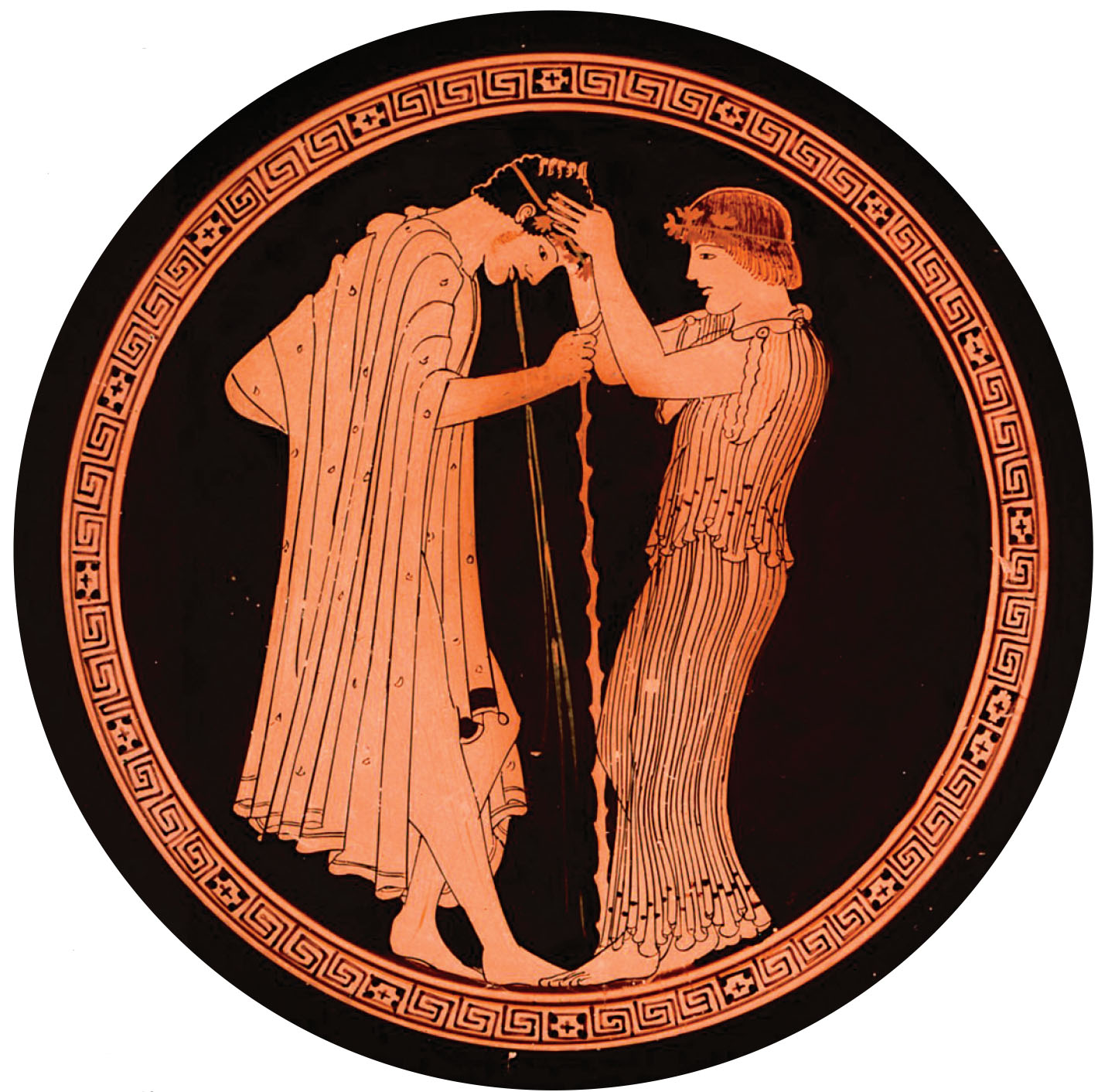Understanding World Societies:
Printed Page 126
Families and Sexual Relations
The Athenians, like other Greeks, lived with comparatively few material possessions in houses that were rather simple. A typical Athenian house consisted of a series of rooms opening onto a central courtyard that contained a well, an altar, and a washbasin. Meals consisted primarily of various grains, especially wheat and barley, as well as lentils, olives, figs, grapes, fish, and a little meat.
In the city a man might support himself as a craftsman, or he could contract with the polis to work on public buildings. Certain crafts, including spinning and weaving, were generally done by women. Men and women without skills worked as paid laborers. Slavery was commonplace in Greece. Slaves, who were paid for their work, were usually foreigners.

In this scene painted on the inside of a drinking cup, a hetaera holds the head of a young man who has clearly had too much to drink. Sexual and comic scenes were common on Greek pottery, particularly on objects that would have been used at a private dinner party hosted by a citizen, known as a symposium. Wives did not attend symposia, but hetaerae and entertainers were often hired to perform for the male guests. (© Martin Von Wagner Museum der Universitat Wurzburg. Foto: P. Neckermann, respectively E. Oehrlein)
The available sources suggest that women rarely played notable roles in public affairs. The status of a free woman was strictly protected by law. Only her sons could be citizens. Only she was in charge of the household and the family’s possessions, yet the law gave her these rights primarily to protect her husband’s interests. Women in Athens and elsewhere in Greece, like those in Mesopotamia, brought dowries to their husbands upon marriage, which went back to their fathers in cases of divorce.
In ancient Athens the main function of women from citizen families was to bear and raise children. Women in citizen families probably spent most of their time at home, leaving the house only to attend religious festivals, and perhaps occasionally plays, although this is debated. In their quarters of the house they oversaw domestic slaves and hired labor, and together with servants and friends worked wool into cloth. Women from noncitizen families lived freer lives, although they worked harder and had fewer material comforts. They performed manual labor in the fields or sold goods and services in the agora, going about their affairs much as men did.
Same-
Same-